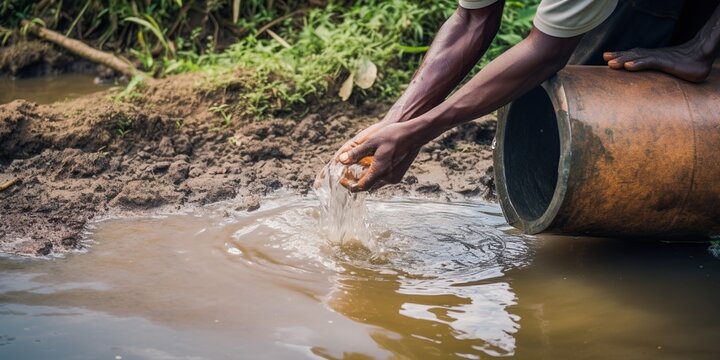Sakkcham Singh Parmaar, New Delhi (13/09/2024): While access to water depends on local geographic, sociocultural, and economic factors, water contamination remains a significant threat.
A recent study has revealed that more than half of the global population 4.4 billion people lack access to safely managed drinking water. This figure exceeds the World Health Organization‘s (WHO) 2022 estimates. The report focused on low and middle-income countries, suggesting that the actual number could be higher if poor access in wealthier nations is considered.
Lead researcher Esther Greenwood from ETH Zurich, Switzerland, noted,
The data we have indicates alarmingly high contamination rates.” The new estimates are based on advanced techniques for assessing water quality. Unsafe drinking water poses significant health risks, potentially causing severe diseases such as cholera, dysentery, typhoid, and milder illnesses like norovirus. For water to be classified as “safely managed,
it must be accessible on demand, free from contamination, and delivered in a way that ensures safety.
Greenwood’s study aimed to fill existing data gaps, analyzing satellite observations and household surveys using artificial intelligence to distinguish between areas with safe and unsafe water access. According to the research published in Science, most of those without safe water access face faecal contamination. The study, however, only represents a single-day snapshot, which means the actual figures could be even higher.
Regions like South Asia and Sub-Saharan Africa are most affected, with more than 1.2 billion people in South Asia and over 80% of the population in Sub-Saharan Africa lacking safe water. Southeast Asia and Oceania (excluding Australia and New Zealand) also face significant challenges, with around 75% of their populations affected. The study also found that nearly half of these populations might be consuming contaminated water.
E.coli was used as an indicator of contamination, as it often signals recent faecal contamination. While not all strains of E.coli are harmful, its presence raises concerns about the spread of more dangerous pathogens. Recent incidents, such as an E.coli-related norovirus outbreak in Italy and athletes falling ill after swimming in the River Seine in Paris, highlight the ongoing risks.
Water contamination isn’t limited to E.coli. Arsenic and fluoride, both naturally occurring but toxic in high concentrations, are also key contaminants. A 2023 study estimated that over 100 countries are affected by fluoride contamination in groundwater, and 230 million people, mainly in Asia, are at risk from arsenic-contaminated water. While geological factors are the primary source of these contaminants, industrial activities also contribute.
Greenwood emphasized that while more households are affected by E.coli, chemical contamination presents distinct health risks that warrant further investigation. Access to clean water varies widely depending on geographic, sociocultural, and economic conditions. Nearly 500 million people still collect water from unsafe sources like wells, rivers, and lakes, according to the WHO’s 2022 estimates.
People in informal settlements or low-income urban areas are particularly disadvantaged. A separate study found that half of the global population believes their drinking water could pose serious health risks. As Sera Young, an anthropologist from Midwestern University in Illinois, stressed, improving water infrastructure is only part of the solution. To foster trust, public access to water quality data and easy-to-understand testing methods are essential, with households even being able to test their water.










